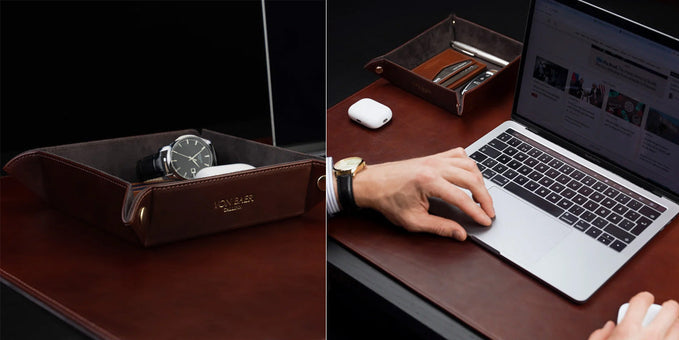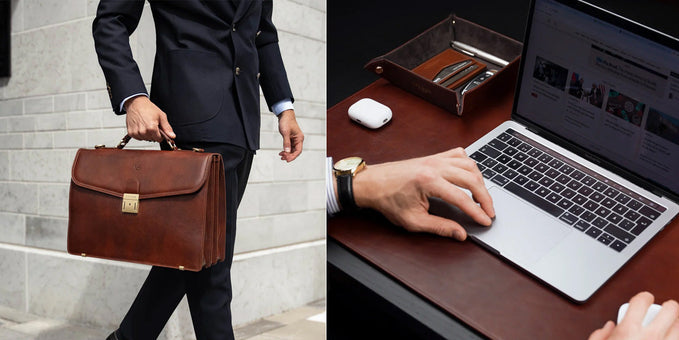Bleisure

What is Bleisure?
Bleisure is the combination of business and leisure travel.
It refers to extending a work trip to include personal vacation time, such as staying extra days at the destination or bringing family.
This trend has grown due to remote work flexibility and the desire to balance work with personal experiences.
Why the Work-Trip No Longer Ends When the Meeting Does

That feeling of landing somewhere new - laptop tucked between a blazer and swimwear - signals more than efficient packing.
It’s a direct response to the past decade of professional burnout, Zoom fatigue, and cookie-cutter corporate itineraries.
In the U.S. alone, 47% of remote-capable workers reported experiencing emotional exhaustion from “working everywhere but resting nowhere” (Gallup, 2024).
This shift explains why traditional business trips are morphing into hybrid journeys - part strategic career move, part deeply personal recharge.
Time away from your desk doesn’t mean detaching from impact. But it also doesn’t mean chasing superficial luxuries. The appeal lies in making a conscious choice: rejecting sterile hotel lobbies with identical art prints for spaces where local cafés remember your coffee order or where a pre-meeting walk doubles as grounding therapy.
Consider how longer stays (10–21 days) alter perception compared to quick turnarounds.
A three-day trip keeps you in "transactional mode." Staying beyond a week allows circadian rhythm adaptation, integration into the community, and cognitive decompression after work sprints.
Your calendar may be digital, but your real-life experiences shouldn’t feel automated. Small details - like whether your apartment balcony faces the sunrise or whether your workspace sits in a shaded courtyard - become the foundation of how you experience the trip.
If travel is no longer about escape, then the next question becomes - what is it about now?
What You’re Really Searching for: More Than Good Wi-Fi and a Pool

On the surface, you’re typing logistical keywords: "coworking with ocean views," "fastest eSIM for Europe," "remote-friendly hotels with gym." But below those Google searches is the deeper reality: you’re looking to reclaim headspace while remaining competent at work.
The underlying drivers:
-
Context-switching fatigue: Jumping between Slack notifications and sightseeing requires cognitive buffer. Psychologists call this attention residue - the leftover mental clutter from one task that makes the next harder. A poorly structured day abroad can amplify this rather than reduce it.
-
PTO guilt: U.S. workers left 5.6 days of paid leave unused in 2023 (U.S. Travel Association). "Productivity justification" is why many opt for half-work, half-leisure stays: it’s easier to extend trips when you can demonstrate uninterrupted delivery.
-
Remote access vs. remote flow: Just because Wi-Fi exists doesn’t mean the space supports flow state. A jittery 20 Mbps in a noisy hostel lobby feels technically possible, but not sustainable for eight-hour sprints. Flow requires stable bandwidth (50 Mbps down / 10 Mbps up minimum), ergonomic posture support, controlled noise, and visual separation between work and leisure zones.
Practical tip: Before booking, run a site-speed test remotely. Ask hosts for screenshots of a Speedtest.net result. Anything below 30 Mbps download should be considered email-only territory, not full video call safe.
Search intent isn’t about location. It’s about recreating the mental environment where you can both perform and exhale.
Once the deeper need is named, what makes a destination actually work becomes clearer.
The Travel Bags That Make Work-Life Trips Seamless
Poor luggage sabotages even the best-prepared itinerary: wrinkled suits before a pitch, tangled cables in security bins, or duffels that fail overhead-bin size checks.
The right bag becomes a portable system, not just storage.
Best bag for hybrid travel: Grand Leather Garment Bag by Von Baer
A high-end garment duffle designed for professionals balancing boardroom and downtime.
It integrates a garment compartment into the lining, letting you lay in a suit jacket, zip the lining closed, then use it as a standard carry-on duffle.

Measurements: 55 x 33 x 25 cm, within most airline limits.
Premium full-grain leather construction ensures durability, while dedicated shoe and accessory pockets prevent creasing.
You can pack all of your formal clothes for business meetings into the built-in garment section, then use the rest as a normal carry-on bag for your leisure activities.
This bag is ideal when a trip demands formal polish one day, casual agility the next.
You can see it here.
Here's a celeb recommendation to show you how it works:
Other options:
-
Smart tech backpacks: Look for RFID-blocking compartments, TSA-approved lay-flat laptop sleeves (up to 17"), and waterproof zippers.
-
Convertible weekender bags: Expandable sections that increase capacity by 30–40%. Perfect when a two-day work trip quietly turns into a five-day adventure.
-
Rolling carry-ons with power banks: Ejectable battery, allow phone charging during long layovers. Ensure wheels are 360° spinner-style for maneuvering through crowded airports.
Expert packing tip: Pack clothing using compression cubes (reduces volume by ~40%). Store electronics in a separate, padded organizer to speed TSA checks. Keep toiletries in a clear, flat pouch so you can pull them out in under three seconds.
The right bag is more than luggage. It preserves the version of you that needs to arrive - composed for client dinners, relaxed for weekend hikes, and mobile enough to glide through airports without stress.
See our related guide on business travel bags here.
How to Spot a Location That Works for Both Worlds

Plenty of cities market themselves as "remote work havens." Very few actually make working from there frictionless.
What distinguishes them is measurable infrastructure, environmental design, and community texture.
1. Function-first work setups
-
Dedicated work surfaces: A kitchen table isn’t a desk. Look for adjustable-height desks or ergonomic chairs with lumbar support. Even a Herman Miller Sayl knockoff beats a café stool.
-
Verified internet speeds: Anything below 10 Mbps upload makes Zoom calls glitchy. Many top destinations (Lisbon, Medellín, Mexico City) now average 100–200 Mbps, but only in fiber zones. Always check neighborhood-specific data using tools like Nomad List or Ookla Heatmaps.
-
Time-zone compatibility: West Coast U.S. workers may struggle with Asia (12–15 hour difference). Europe (5–9 hour difference) aligns better for synchronous calls. If meetings dominate your workweek, Europe or Latin America reduce circadian disruption.
-
Focus zones: "Coworking cafés" often market as ideal, but espresso machines blasting milk steamers every 5 minutes won’t support deep focus. Instead, look for coworking labs with acoustic pods or boutique stays with soundproof meeting rooms.
2. Built-in slow living
-
Nature within walking distance: Being able to walk to a park, trail, or ocean matters more than advertised rooftop yoga. Ten minutes of sunlight exposure before noon regulates melatonin and prevents jet lag.
-
Micro-routines that sync with local rhythm: If locals take two-hour lunches, use that as a cue for your decompression block instead of forcing U.S.-centric noon-to-one eating.
-
Walkability: A Walk Score of 80+ ensures you don’t lose time arranging transport for every errand. Remote work feels draining if your only connection to the outdoors requires a $15 Uber.
3. Real community, not staged mixers
-
Organic meetups: True integration comes from attending recurring gatherings - weekly language exchanges, Saturday maker markets - not curated "digital nomad happy hours" where everyone is transient.
-
Tools for access: Meetup.com, Couchsurfing hangouts, or even Slack channels like "Lisbon Digital Nomads" outperform random flyers.
-
Belonging metrics: If the average expat stays longer than three months, chances are it’s a community worth embedding into.
When a city lets you toggle seamlessly between "analyst on deadline" and "local sipping tinto at a plaza," it stops being a backdrop. It becomes lived-in.
Now that you’ve found the right backdrop, what tools help make it sustainable?
The Essentials You Didn’t Realize You’d Rely On

Beyond chargers and clothes, there are non-obvious essentials that separate smooth hybrid travel from stressful scrambling.
Tools that sustain you:
-
Portable monitor: A 14-inch lightweight model under 1.5 lbs (like ASUS ZenScreen) creates a dual-screen setup in any Airbnb. Productivity jumps 20–30% when your eyes aren’t juggling tabs.
-
Noise-canceling earbuds: Prioritize models with adaptive transparency modes so you can focus but still hear a café barista calling your name. Sony WF-1000XM5 or Bose QC Earbuds II are optimal.
-
eSIM/data plans: Holafly or Airalo offer unlimited data packages from $19/week. This saves you from airport SIM hunts.
-
Insurance: Ensure "remote work" is covered. World Nomads’ Standard Plan doesn’t, but SafetyWing Remote Health does. Look for clauses on laptop theft, coworking injuries, and emergency evacuation.
-
Coworking apps: Deskpass or Croissant offer hourly credits in vetted spaces. If your stay lasts under two weeks, this saves you from full memberships.
Services that reduce friction:
-
Grocery delivery: Apps like Rappi (Latin America) or Glovo (Europe) minimize wasted hours. Pair this with meal-prep Sunday nights to eliminate the "daily restaurant fatigue" problem.
-
Multilingual wellness access: BetterHelp offers video therapy across time zones. Pair with meditation apps that work offline, like Balance.
-
Time zone tools: Use World Time Buddy’s paid plan to auto-block incompatible hours. Avoid manually calculating 9am PST from Lisbon every day.
The most liberating trip feels predictable in its essentials. Predictability creates the bandwidth for spontaneity.
With logistics handled, how do you design a stay that makes you feel like you belong?
Why You Don’t Want to Feel Like a Tourist - Even When You Technically Are

You don’t want to stand out as a transient visitor. You want to integrate just enough to avoid superficiality.
How to signal integration:
-
Stay duration: Book at least 10 nights in one place. It takes four days to adjust to circadian rhythm, three days to discover your go-to café, and another three to connect beyond surface level.
-
Phrases to learn: Beyond "hello" and "thank you," prioritize "Can I join?" and "Where’s your favorite spot?" These break cultural ice faster than transactional greetings.
-
Events to accept: One slightly nerve-inducing invite (like a cooking class in someone’s home) tends to open more meaningful connections than tourist-market wine tastings.
How to layer work with local rhythm:
-
Work during locals’ professional hours. In Lisbon, 9am–6pm means cafés are filled with productive energy. Working at 10pm isolates you from the flow.
-
Match local mealtime. If Mexico City restaurants bustle at 9pm, resist your 6:30pm U.S. dinner instinct. Eating when locals eat creates more chance encounters.
-
Seek communal wellness: sweat in a public sauna, attend donation yoga at parks. These cost less than curated "nomad yoga classes" and integrate you faster.
Integration doesn’t mean assimilation. It means finding rhythm in a new setting where your professional and personal selves don’t feel staged.
Having made this experience human, how can you repeat it - without burning out?
How to Travel Like This Without Feeling Like You're Always Working

One of the biggest risks is turning your hybrid trip into "same job, different wallpaper." Avoid the trap by engineering mental margins.
Protect internal rhythms:
-
Use circadian-friendly lighting (amber bulbs after 8pm, daylight bulbs in morning). Jet lag reduces productivity by up to 25% in the first week if light cues aren’t managed.
-
Block out rest windows: 30–60 minutes of no-screen downtime daily. Label them on your calendar as "busy" to deter Slack interruptions.
-
Incorporate analog tools: a Moleskine or sketchpad to outline goals. Writing by hand increases recall and slows racing thoughts.
Prevent oversaturation:
-
Resist "seeing it all." Research shows decision fatigue spikes after visiting 3–4 new landmarks in one day. Prioritize depth over breadth.
-
Leave unplanned days: 20% of your stay should be blank calendar space. That margin often produces your most memorable discoveries.
-
Choose a weekly anchor: it could be Saturday surf lessons, or Thursday night cooking classes. Anchors create stability amid movement.
Freedom doesn’t mean constant motion. It means designing the right dose of stillness in a setting that inspires you.
Next, what kind of experiences are best suited to this style of working and wandering?
Where to Go Next - Not for Status, But for Fit

Forget trending hashtags. Fit matters more than Instagram potential.
For nature-first productivity:
-
Asheville, NC: Surrounded by Blue Ridge trails within 20 minutes, yet equipped with coworking hubs like Hatchworks offering 1 Gbps fiber.
-
Sedona, AZ: Not just "energy vortexes." Many Airbnbs advertise verified 200 Mbps speeds. Desert air enhances recovery for those with screen-induced eye strain.
For culture-rich urban work-life:
-
Lisbon, Portugal: Sunrise calls align with U.S. East Coast hours. Evening fado bars offer decompression. Co-living hubs like Second Home ensure ergonomic setups.
-
Mexico City: 7,000+ cafés with 30+ Mbps averages. Coworking giants like WeWork Reforma provide backup. Strong food culture balances long workdays.
For cost-effective depth:
-
Medellín, Colombia: Nicknamed "Valley of Eternal Spring." Cost of living index ~55 (compared to NYC’s 100). Monthly coworking memberships average $80.
-
Tbilisi, Georgia: Free 365-day visa-on-arrival for most nationalities. Coworking hubs like Impact Hub Tbilisi foster genuine expat integration.
For wellness-first working:
-
Ubud, Bali: Home to The Yoga Barn, but also dozens of fiber-internet villas. Coffee shops double as workspaces with ergonomic bamboo seating.
-
Puerto Escondido, Mexico: Morning surf lessons, smoothie stands, and growing coworking hubs like Selina. Average rental $600/month for long stays.
Destinations aren’t about prestige. They’re about sustaining work output without draining personal well-being.
Now that you know how to choose and use a destination - what are the travel setups that reduce planning strain?
The Stays That Just Get It - No Extra Explaining Required
Not all accommodations are built for this lifestyle. Look for the ones engineered with hybrid living in mind.
Remote-ready housing:
-
Outsite: Offers >50 properties worldwide. Each location guarantees desks, fiber, and community dinners. Average cost: $1,500/month.
-
Selina: Combines hostels, coworking, wellness classes, and tours. Good for social extroverts who still need real work facilities.
-
Anyplace: Vetted units with standardized desks, chairs, and 100 Mbps minimum speeds. Ideal for professionals prioritizing consistency.
Non-negotiable features:
-
Ergonomic seating: Ask specifically about chair type before booking. Office chairs with at least lumbar support adjustment prevent back strain.
-
Lighting: Natural light reduces eyestrain. Avoid spaces where primary work area is artificially lit.
-
Kitchen capacity: Cooking saves $400–600/month compared to eating out daily in global cities. Look for sharp knives and adequate counter space.
-
On-site events: Prefer workshops or mastermind-style gatherings over shallow mixers.
Your stay shouldn’t require explaining why you need a second monitor. It should already anticipate those needs.
Having the right accommodation is one part - your luggage can either ease or complicate every step. Which travel bags truly support this lifestyle?

Author: Igor Monte
Igor Monte is the co-founder of Von Baer. He's an expert in all things premium leather, from being an end-user right up to the design and manufacturing process. His inside knowledge will help you choose the best leather product for you.
We strive for the highest editorial standards, and to only publish accurate information on our website.
Leave a Comment
Your email address will not be published.







